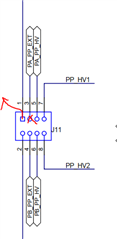Other Parts Discussed in Thread: TPS65988DJ, TPS65982, TPS26750, TPS25751, TPS25751EVM
Tool/software:
Subject: Urgent: TPS65988DJEVM Failing During Testing
Dear Team, I recently purchased two TPS65988DJEVM boards and conducted a test using a USB-C sink to receive 5V. I then applied a 3A load with an active load to verify its stability overnight. Unfortunately, the EVM failed within less than an hour.
Upon inspection, we found that the board had burned out, with the D4 diode on Port A damaged(pin A and C short ). We attempted to replace the diode, but the port remained non-functional, likely due to additional component failures.
We then conducted a similar test on the second board purchased at the same time, this time sinking 15V, but it also failed within approximately one hour. Again, D4 and other unidentified components were damaged. At this point, we are unable to proceed with further evaluation. Could someone assist in identifying why the EVM cannot sustain power delivery for more than an hour? Any insights into potential causes and solutions would be greatly appreciated. Thanks,
Steve




